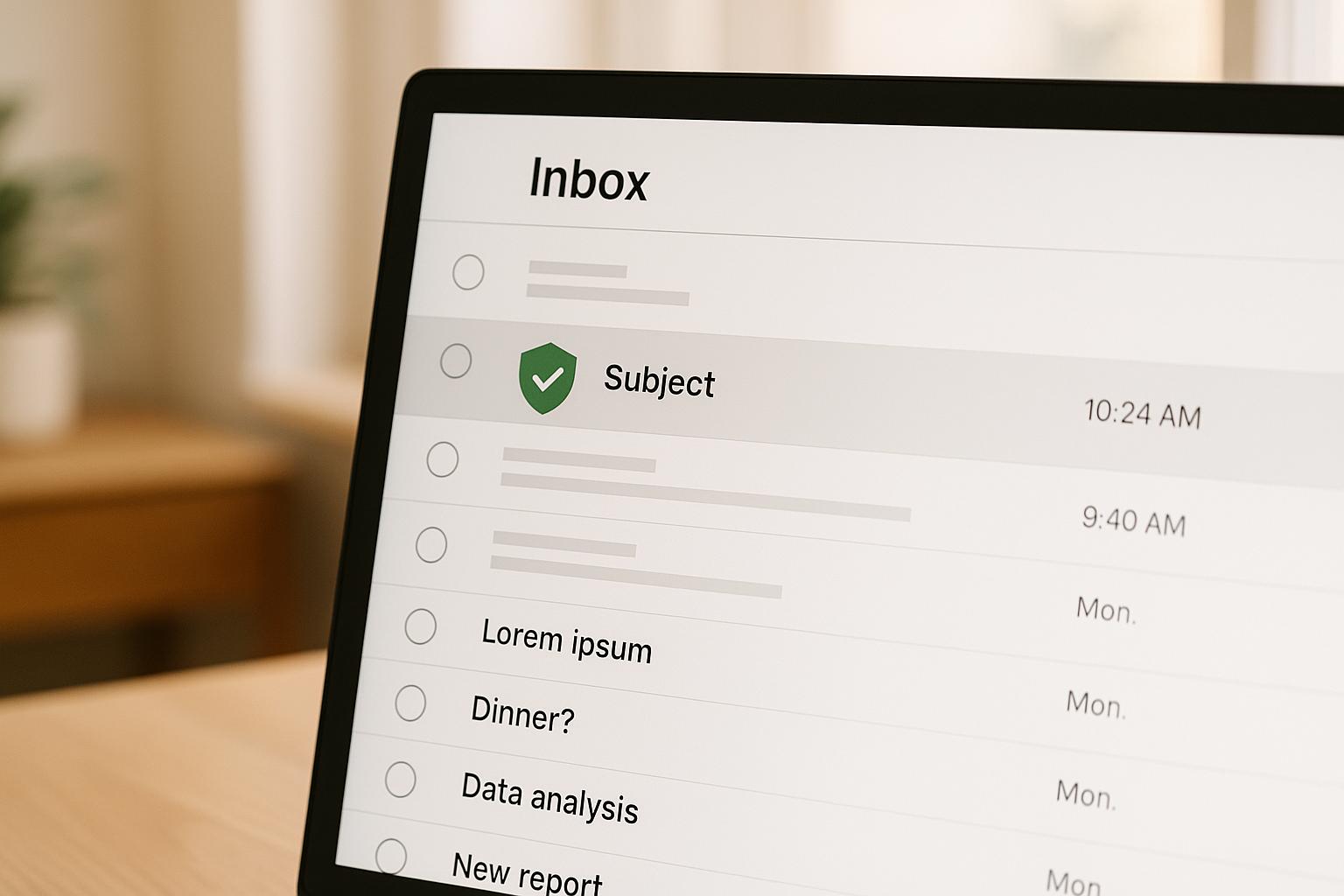Email compliance auditing ensures your email marketing follows legal rules, protects user data, and maintains subscriber trust. Here’s a quick breakdown:
- Why it matters: Non-compliance can lead to fines (e.g., GDPR penalties up to €20 million) and damage your reputation.
- Key laws to know:
- GDPR (EU): Requires clear permission and data rights.
- CCPA (California): Allows users to control/delete their data.
- CAN-SPAM (US): Ensures opt-out options and sender transparency.
- PECR (UK): Demands direct permission before marketing.
Types of Audits:
- Deliverability & Domain Reputation: Checks if emails land in inboxes, not spam. Tools like SPF, DKIM, and DMARC help authenticate your emails.
- Content & Design: Ensure emails include sender info, an unsubscribe button, and accessible design.
- Privacy & Data Practices: Verify secure data handling and proper consent tracking.
Tools to Help:
- Litmus ($99/month): Email previews and accessibility checks.
- Email on Acid ($73/month): Spam trigger detection.
- Postmark: Tracks delivery and bounces.
- SendForensics: Monitors sender reputation and blacklists.
Quick Tips:
- Audit emails quarterly.
- Track metrics like complaint rate (>0.1%) and bounce rate (>2%).
- Automate compliance tasks using email platforms.
- Stay updated on changing email laws.
Pro tip: Start small - audit one campaign, use basic tools, and grow from there. Regular checks protect your business from penalties and build trust with your audience.
Related video from YouTube
Different Types of Email Compliance Audits
Getting your emails to land in inboxes while following all the rules isn't easy. Here's what you need to know about the three main types of email compliance audits.
Checking Deliverability and Domain Reputation
Your brilliant email campaigns mean nothing if they end up in spam folders. A deliverability audit looks at how many of your emails actually reach your subscribers' inboxes. It checks your domain's standing with email providers and spots red flags like ALL CAPS or clickbait subject lines that might trigger spam filters.
Want to prove you're the real deal? That's where email authentication comes in. SPF, DKIM, and DMARC protocols act like your email's ID card - they tell inbox providers "yep, this email is actually from us." These tools help stop others from pretending to be you and keep your emails flowing to inboxes.
Reviewing Email Content and Design
Every email needs to follow specific rules and be easy to read. Here's what your content needs to include:
- Your real name or business name as the sender
- Your company's street address
- An unsubscribe button that works
- Subject lines that match what's inside
Make your emails work for everyone. About 15% of subscribers have trouble seeing well, so use colors that pop against each other, fonts people can read easily, and add text descriptions for your images.
Auditing Privacy and Data Practices
Privacy audits check how you handle subscriber information. Keep records of when and how people said "yes" to your emails. Lock down their data with encryption and only let the right people access it.
If you work with other companies to handle your emails, make sure they follow the rules too. Check up on them regularly - their mistakes could become your headaches.
The next challenge? Finding the right tools to make all this easier.
Tools to Help with Email Compliance Audits
The right tools can make email compliance audits simpler and more accurate.
"Non-compliance with email regulations can result in severe penalties, such as GDPR fines of up to €20 million or 4% of the company's annual global turnover."
Let's look at the key tools that can help you stay on top of email compliance.
Litmus and Email on Acid are two popular testing platforms. At $99/month, Litmus shines with email previews across more than 100 email clients and helps check accessibility issues. Email on Acid ($73/month) focuses on catching spam triggers and scanning for compliance problems.
Your sender reputation plays a huge role in email success. It affects both your deliverability and how well you meet regulations. A good reputation keeps you off blacklists and helps email providers trust your messages.
Two standout tools can help protect your reputation:
- Postmark: Watches your email delivery in real-time and tracks bounces so you can fix problems fast
- SendForensics: Gives you deep insights into your reputation and keeps an eye on your IPs and domains across major blacklists
Need help picking the right tools? The Email Service Business Directory can point you to platforms that fit your needs. Here's what different tools can do for you:
| Tool Type | Example | What It Does |
|---|---|---|
| Compliance Monitor | AuditBoard | Runs automatic compliance checks |
| Reputation Tool | SendForensics | Keeps you off blacklists |
| Audit System | Compliance suites | Tracks everything systematically |
Pick tools based on what you need most - whether that's privacy checks, blacklist prevention, or something else - and what fits your budget. The right mix of tools will help you build trust with your audience while keeping compliance headaches to a minimum.
sbb-itb-6e7333f
Tips for Keeping Emails Compliant
Here's a reality check: Vodafone got hit with an €8.5 million fine in Spain for messing up their marketing compliance. Don't let this happen to you.
Perform Regular Audits and Track Metrics
Check your email program every quarter - at minimum. Pay close attention to your numbers, especially bounce and complaint rates. These stats can tip you off to problems before they become expensive mistakes.
"Regular audits are essential for assessing compliance, performance, and efficiency in email marketing practices." - EmailProGuide, 2024
Here's what you need to watch:
| Metric to Monitor | Why It Matters | Action Threshold |
|---|---|---|
| Complaint Rate | Shows if people think you're spamming | Above 0.1% |
| Bounce Rate | Tells you if your list is clean | Above 2% |
| Unsubscribe Rate | Shows if people want your emails | Above 0.5% |
Use Automation and Keep Records
Let's face it: nobody wants to handle compliance manually. Good news - most email platforms now handle the heavy lifting for you. They'll track consent, manage unsubscribes, and keep records automatically. But remember: automation is just a tool, not a complete solution.
Stay Updated on Email Laws
Email laws change faster than you might think. Want to stay out of trouble? Do these three things:
- Follow regulatory bodies' updates
- Connect with compliance experts on social media
- Sign up for industry newsletters
Pro tip: Check out the Email Service Business Directory to find platforms that build new compliance rules right into their system. It's like having a compliance team on autopilot.
Wrapping Up
Want to stay on the right side of email laws? Here's what works for email compliance auditing - and what you need to do RIGHT NOW.
The Must-Have Components
| Audit Component | Why It Matters | What To Do |
|---|---|---|
| Regular Reviews | Spots problems early | Check every 3 months |
| Documentation | Shows you follow rules | Use tools to track everything |
| Legal Updates | Keeps you current | Check rules monthly |
Ready to start? Here's your game plan:
Pick ONE email campaign and audit it completely. It's perfect for small businesses just getting started with compliance - you'll learn the ropes without getting overwhelmed.
Next, grab the right tools. Check out the Email Service Business Directory to find platforms that handle the heavy lifting of compliance for you. These tools can make your life WAY easier.
Finally, build your daily process. You'll want to check these boxes:
- Did everyone actually sign up?
- Does your content follow the rules?
- Are you handling data properly?
- Can people easily unsubscribe?
- How's your sender reputation looking?
Here's a pro tip for small businesses: Start with basic compliance tools. As your business grows, you can add more advanced features. Many budget-friendly tools offer automated compliance features that grow with you - no need to break the bank right away.
FAQs
What happens if I skip compliance checks?
Skip compliance checks and you're playing with fire. Your business could face stiff penalties, get blocked by email providers, and spend big money fixing the mess. Check our earlier section about GDPR fines - the numbers will make you think twice.
What is compliance in email marketing?
Email compliance means following rules like GDPR and CAN-SPAM when running your email campaigns. It's about getting clear permission before sending emails and being upfront about how you'll use people's data.
| Compliance Area | What You Need | Why It's Critical |
|---|---|---|
| Permission | Clear opt-in records | Avoid legal penalties |
| Data Handling | Secure storage systems | Protect customer information |
| Email Content | Clear unsubscribe options | Meet legal requirements |
How often should I audit my emails?
Most successful businesses check their email compliance every three months. You'll want to take an extra look whenever privacy laws change or you make big changes to your marketing approach.
What tools help with compliance?
The Email Service Business Directory can point you to solid platforms that help keep you in line with the rules. Here's what experts say about compliance tools:
"Specialized software for automated analysis helps scan email content and attachments for protected information, making HIPAA compliance much more manageable for businesses of all sizes."
These tools are a game-changer for small businesses - they cut down on manual work and help avoid mistakes that humans might make. Think of them as your compliance safety net.
How can small businesses manage compliance?
You don't need a big budget or team to handle compliance right. Here's what you need to do:
- Get started with tools like MailerCheck (costs $29/month)
- Keep detailed records showing when and how people said "yes" to your emails
- Double-check your email content meets all the rules


